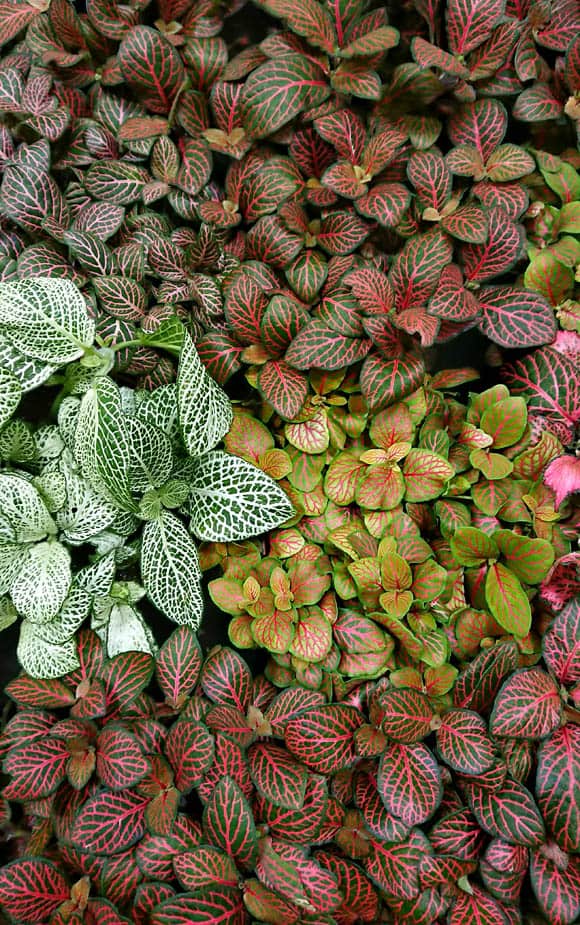The Nerve Plant, scientifically known as Fittonia albivenis, is a popular houseplant cherished for its striking foliage. Its vibrant leaves, characterized by intricate white, pink, or red veins, add a touch of beauty to any indoor space. However, caring for this delicate plant requires specific attention to ensure it thrives. Here’s a comprehensive guide to help you keep your Nerve Plant healthy and vibrant.
Light Requirements
Nerve Plants prefer bright, indirect light. Direct sunlight can scorch their delicate leaves, while too little light can cause the vibrant veining to fade. Place your plant near a north or east-facing window where it can receive filtered light throughout the day. If natural light is insufficient, fluorescent lights can also help maintain its colorful foliage.

Watering
Fittonia albivenis thrives in consistently moist soil but is susceptible to root rot if overwatered. Here are some tips for proper watering:
- Frequency: Water the plant when the top inch of soil feels dry to the touch. This usually translates to watering about once a week, but this can vary depending on your home’s humidity and temperature.
- Method: Water thoroughly until excess water drains out of the bottom of the pot. Ensure the pot has proper drainage to prevent water from pooling at the bottom.
- Humidity: Nerve Plants prefer high humidity. To increase humidity, you can mist the plant regularly, use a humidifier, or place the pot on a tray filled with water and pebbles.
Soil
Fittonia albivenis thrives in well-draining, peat-based potting soil. A mix of peat moss, perlite, and vermiculite is ideal. This mixture retains moisture while allowing excess water to drain away, preventing root rot.
Temperature
Nerve Plants prefer temperatures between 60-80°F (16-27°C). They are sensitive to temperature fluctuations and drafts, so avoid placing them near windows or doors that open frequently or near air conditioning vents. Consistent room temperature is key to their well-being.

Fertilizing
Feed your Nerve Plant monthly during the growing season (spring and summer) with a balanced, water-soluble fertilizer diluted to half strength. Reduce fertilizing frequency during the fall and winter when the plant’s growth slows.
Pruning and Repotting
- Pruning: Regular pruning helps maintain the shape and fullness of the Nerve Plant. Trim any leggy or unhealthy growth to encourage bushier development. Pinching back the stems can also promote a fuller appearance.
- Repotting: Repot your Nerve Plant every 1-2 years or when it outgrows its current pot. Choose a pot that is 1-2 inches larger in diameter than the current one. Repotting is best done in the spring when the plant starts its active growth phase.
Common Problems and Solutions
- Yellowing Leaves: This can indicate overwatering or poor drainage. Ensure the soil is well-draining and allow the top inch to dry before watering again.
- Wilting: Underwatering or low humidity can cause wilting. Increase watering frequency and humidity levels.
- Pests: Nerve Plants are susceptible to pests like spider mites and aphids. Regularly inspect the plant and treat infestations with insecticidal soap or neem oil.
Propagation
Nerve Plants can be easily propagated through stem cuttings:
- Cutting: Take a healthy stem cutting with at least two leaves and a node.
- Rooting: Place the cutting in a glass of water or directly into moist potting soil.
- Transplanting: Once roots have developed (usually within a few weeks), transplant the cutting into a pot with well-draining soil.
Conclusion
Caring for a Nerve Plant can be a rewarding experience. By providing the right light, moisture, and temperature conditions, you can enjoy the vibrant beauty of this plant year-round. Regular attention to watering, humidity, and occasional pruning will ensure that your Fittonia albivenis remains healthy and thrives in your home.

How do I properly care for a Nerve Plant (Fittonia albivenis)?
If you’re looking to keep your Nerve Plant thriving and healthy, it’s important to understand the specific care requirements for this unique plant. From the ideal lighting conditions to watering frequency and maintenance tips, this article will guide you through everything you need to know to successfully care for your Fittonia albivenis.
